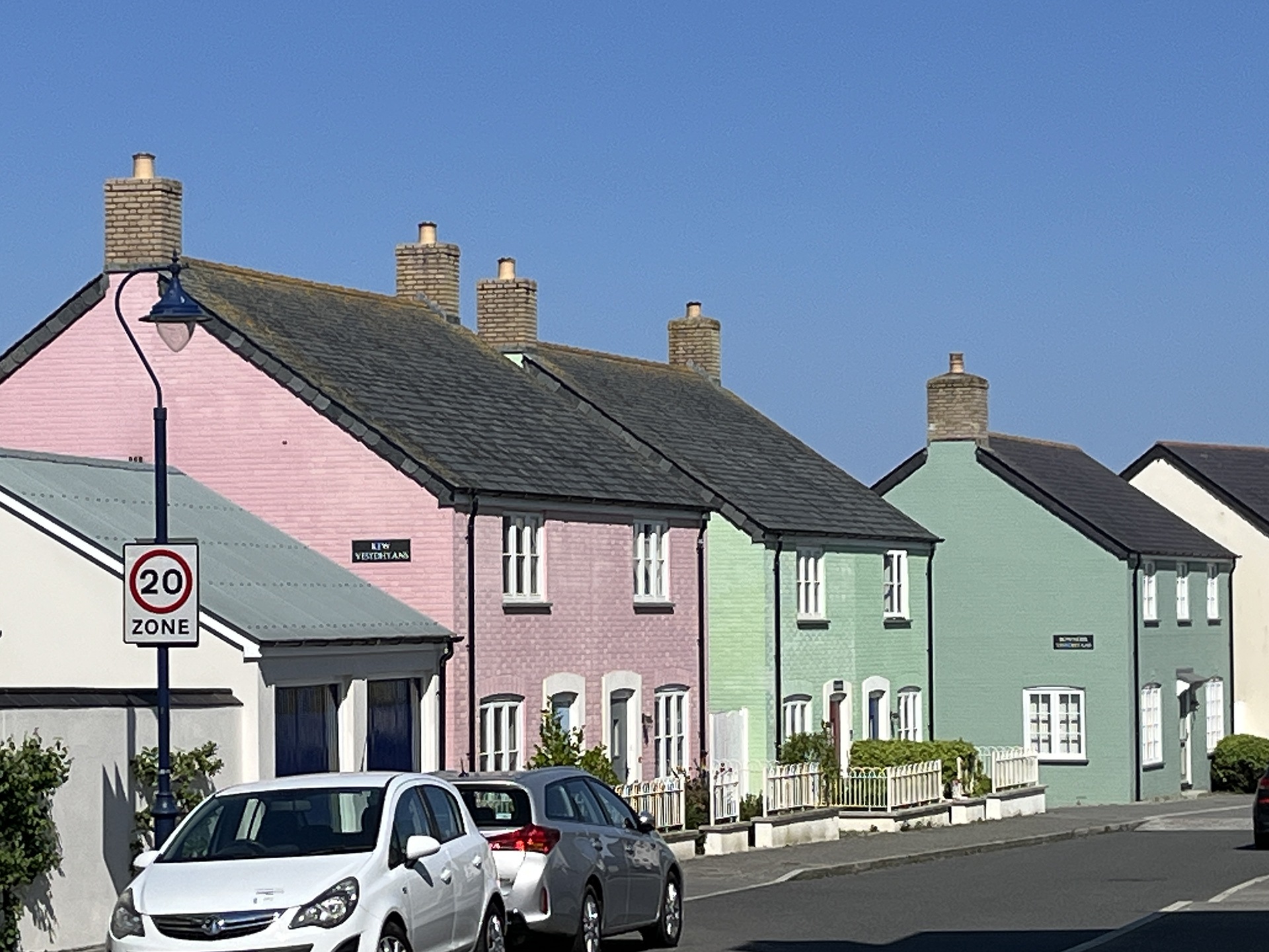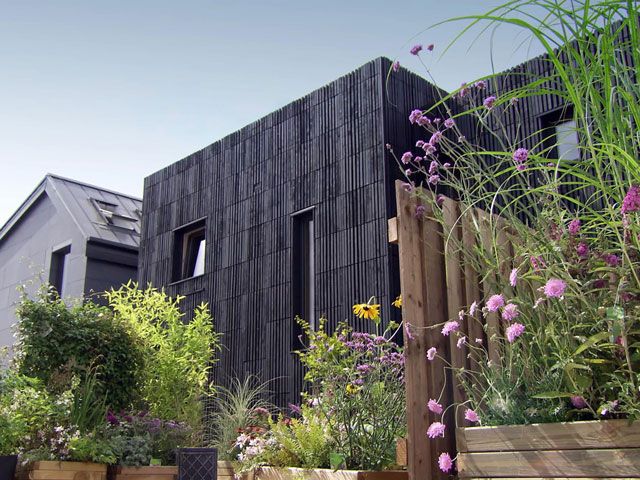What’s it like to live in Nansledan?
The King’s housing development in Newquay is a decade old. Now that it’s well established, what’s it really like to live in an estate designed to look 100 years old that has a 36-page rule book for residents? We went along to find out…
Nansledan is an extension to surfers’ paradise Newquay, on the stunning north coast of Cornwall.
The development is being constructed slowly over decades by three local building firms. And despite critics sneering, it’s proving very popular with those locals who can afford to live there…
Before we get to the nitty gritty of what life’s like there, here’s the background on this out-of-the-ordinary place.
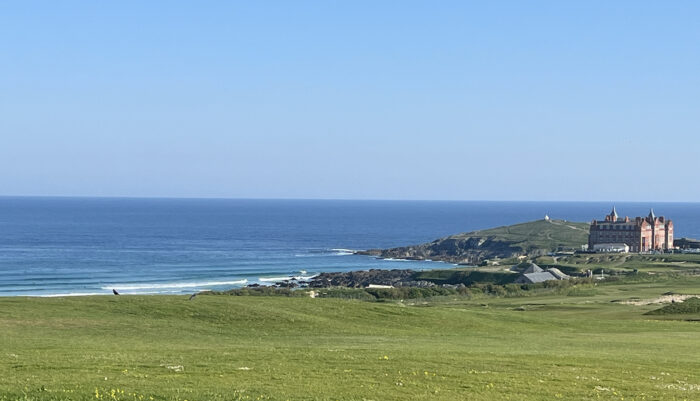
Newquay is a beautiful place to live
Cornish language
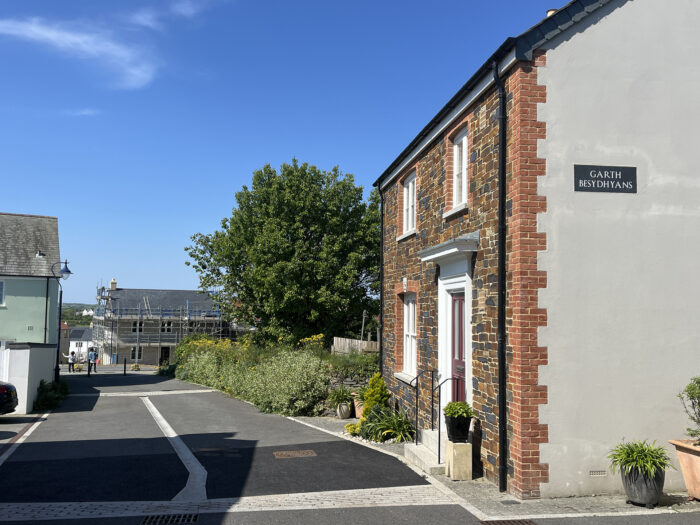
Slate street name and building still in progress in the background
The name, which means ‘broad valley’ in Cornish, is pronounced ‘Nans-ledd-in’. All the street names on the new development are Cornish too, or taken from the Death of Arthur, the tale of King Arthur, who legend says was born not far away in Tintagel.
Several other things also set this estate apart…
First, it was the brainchild of the King, planned through his charity the King’s Foundation (formerly the Prince’s Foundation) and built on land owned by the Duchy of Cornwall.
Second, it is designed to look old – in a traditional style that reflects Cornish vernacular buildings.
And, third, there’s a very comprehensive set of rules that residents need to abide by if they want to live there, governing both the appearance of their homes and their behaviour.
Over 800 homes are finished so far, and the scheme will eventually include almost 4,000, plus employment opportunities and the services needed to support this new community, from schools to shops, medical centre to community centre.
The Duchy of Cornwall

Building detailing features traditional motifs – each district of Nansledan has its own flower emblem
Prince William is the 25th Duke of Cornwall, and he is now in ultimate charge of the scheme begun by his father.
The Duchy of Cornwall was created in the 14th century by King Edward III for his son, and revenue from the Duchy is used as an income source for the monarch’s heir.
The Duchy owns 128,500 acres across 20 counties, including 19,000 acres in Cornwall itself, plus a portfolio of financial investments.
It manages the Nansledan project as well as other smaller housing schemes in Newquay.
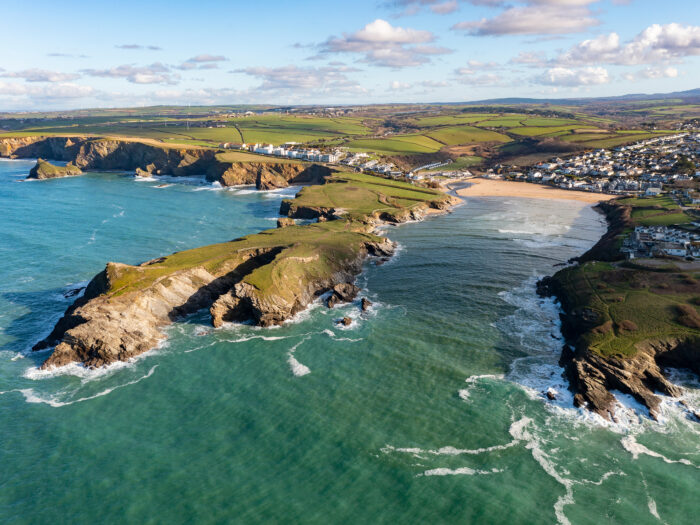
Cornwall’s beauty doesn’t protect it from social issues such as homelessness Image credit: Adobe Stock
Other Duchy schemes
A similar scheme in Scotland, at Knockroon, has proved less successful.
But, the Duchy has applied for planning permission for another new development at South East Faversham in Kent.
Poundbury
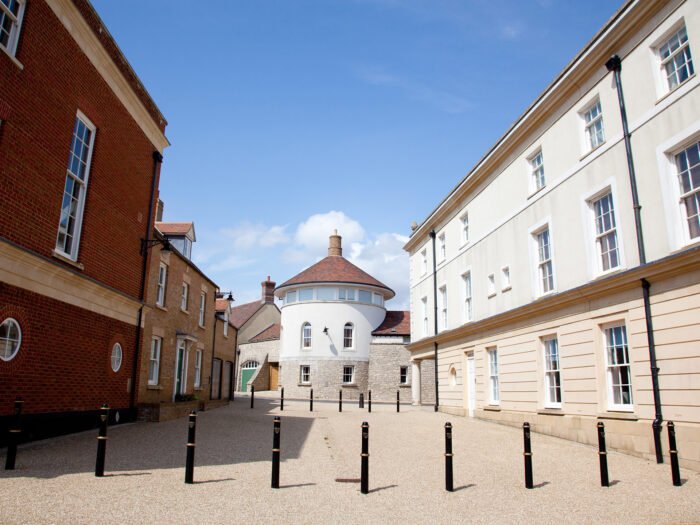
The architecture at Poundbury is grander in style Image credit: Adobe Stock
The King’s first large-scale ‘model’ community was Poundbury, an extension to Dorchester, built on Duchy land in Dorset.
It was initially criticised for its similar combination of traditional appearance and extensive list of rules.
But it has bedded in well since construction began there in 1993 – and the estate has proven very popular with residents.
Nansledan has been designed taking account of lessons learned from Poundbury, and with an even greater focus on sustainability, which has become a higher priority in the years all since Poundbury was built.
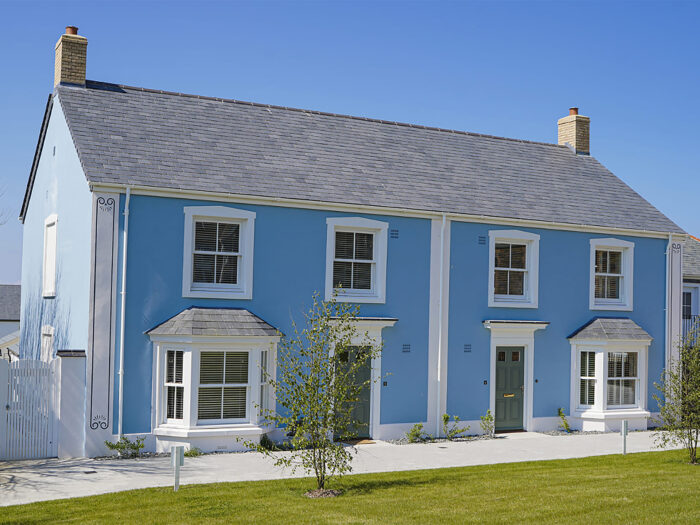
The underlying vision is to create a sustainable, walkable, mixed-use community that reflects its local context and works well for the people who live there.
Interest in architecture
This kind of community building is a passion project for the King.
He has always taken an interest in architecture, since the infamous time in 1984 when he called a proposed extension to the National Gallery a ‘monstrous carbuncle’.
As the Prince of Wales, he always made clear his preference for classical styles over modernism; publishing a magazine about architecture; setting up the Prince of Wales’ Institute of Architecture (that would eventually become the King’s Foundation), and writing a book on the topic, A Vision of Britain.
He also exerted influence behind the scenes on the proposed design of significant new buildings, something that many have criticised as undemocratic.
Model community

The King visited Nansledan with Kier Starmer and Angela Rayner earlier this year. Image credit: Simon Dawson/Number 10 Downing Street under Creative Commons
For Charles, Nansledan was another chance to put into practice his own ideas about what constitutes a successful neighbourhood – with the hope that these will be copied elsewhere.
Earlier this year, he took the opportunity to show off the project to Kier Starmer and Angela Rayner, for whom solving the UK’s housing crisis is a top priority.
Traditional style
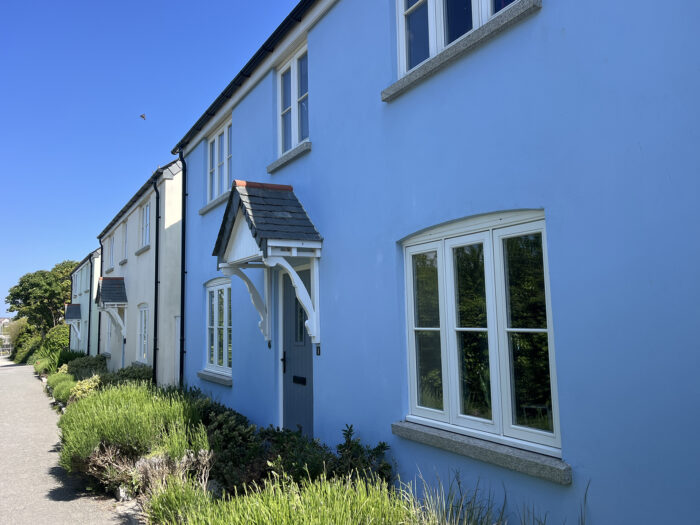
Pastel shades and lavender in the garden
The variety of designs gives the suburb real visual appeal – though it won’t be to the taste of those who like modern architecture, because all the buildings here are built in traditional styles.
All are low rise; some brick painted in pretty pastel colours; some clad in weatherboarding; some in hung slate, some rendered; some stone built.
There’s a mixture of large detached homes, semis, terraced houses, and flats.
Most are terraced, sitting behind traditional looking iron railings. Doors and windows are traditional in style and made of timber (or metal) – uPVC is not allowed.
Low-carbon construction
Homes are built using modern low-carbon construction methods and locally sourced materials.
These are really well insulated, sustainable green homes built to LETI and RIBA 2030 Climate Challenge standards.
Pedestrian friendly
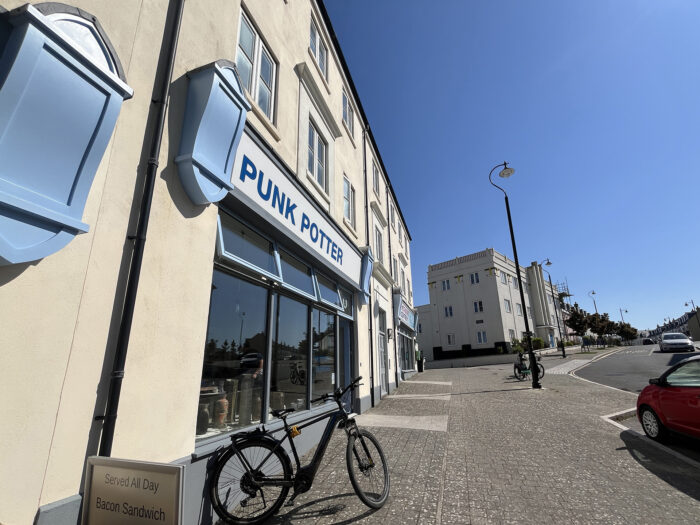
The community is bike friendly
The plan is designed to encourage walking and cycling rather than car use, though whether car use will be reduced remains to be seen.
The development is zoned into several quarters, each with a distinctive look, and its own centre.
The layout is designed so that no home is more than five minutes’ walk from the nearest shops.
Streets are curved to slow traffic, and residents’ cars – and garages – are hidden out of sight behind the terraces in parking courts (small car-parks with designated spaces).
Businesses
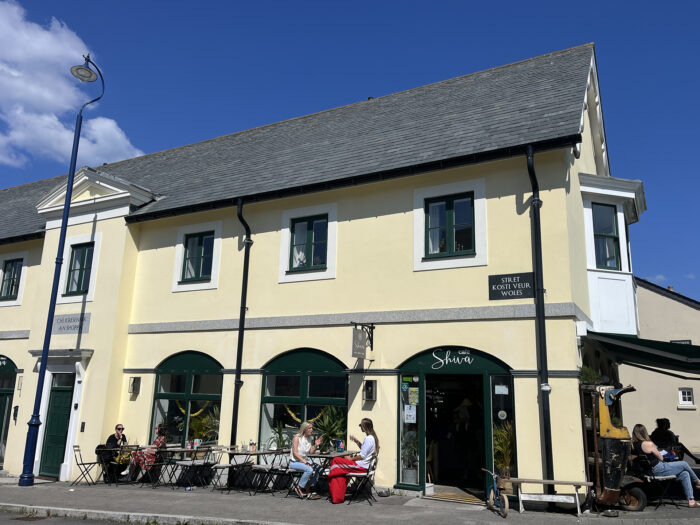
Café culture – the area feels affluent
Nansledan’s main high street – which will boast a Tesco – has not been built yet, but small businesses operate in the shops dotted around the scheme.
So far these are mainly independent speciality shops and boutiques, such as a yoga studio, handmade chocolate shop, vintage shop, fancy interiors shops and so on.
Other architectural styles
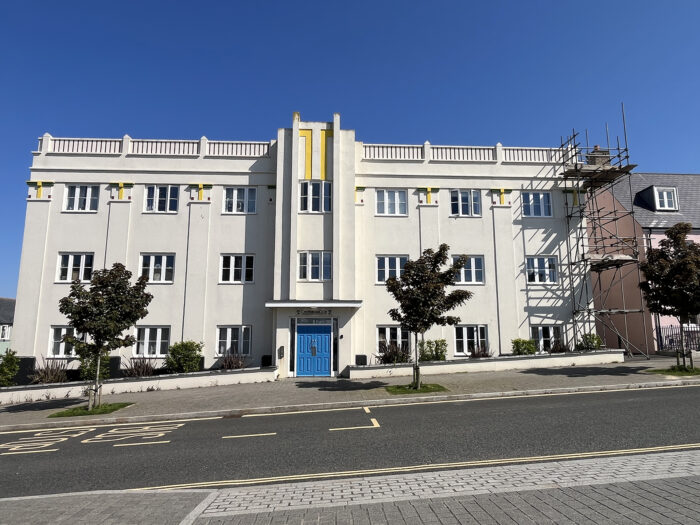
Public and commercial buildings are designed in a range of historical styles
Commercial and public buildings are designed in different historical styles, from Arts and Crafts to Art Deco, to recreate the architectural variety of a place that has grown organically over time.
So far, the public buildings are less grand and theatrical than those in Poundbury.
Affordable housing
Thirty percent of the homes in Nansledan are classed as affordable, and available for local people on Cornwall Council’s housing register. Half of these are offered at an affordable rent, the rest for shared ownership or discounted sales.
The affordable homes are identical to the others, and are scattered throughout the development.
How genuinely affordable they are in a town with many low wages is another matter.
But Prince William recently announced 24 new supported homes for homeless people in the development – and the proportion of social housing is set to increase to 40% in future stages of construction.
Nature friendly
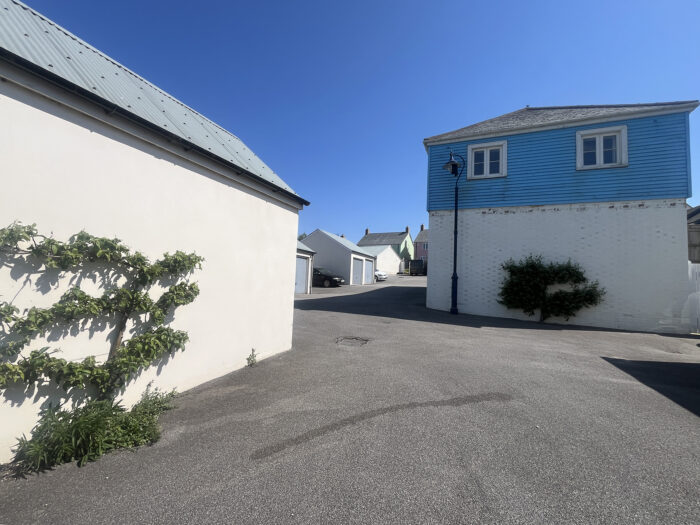
Residents may pick fruit from the espaliers in the parking courts
There are lots of lovely nature-friendly touches, such as fruit trees trained up walls alongside pavements, and bee bricks and nest boxes built into walls.
Front gardens come planted with herbs and other edible plants.

Image credit: Hugh Hastings
Gardens are generally small, but there are plenty of communal green spaces, including several playparks, allotments and a community orchard.
Visual clutter
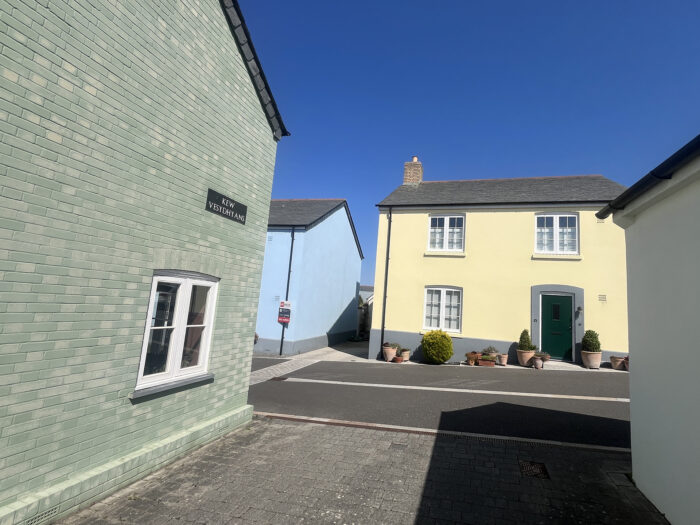
Homes are close together like in ancient villages or towns
‘Visual clutter’ is frowned upon. There are few street signs, just tasteful slate street name signs.
Meanwhile the rules state: ‘The naming of new houses in Nansledan will not be encouraged.
This is because the affixing of nameplates to a house increases the visual clutter of the elevations.’
The rules
Talking of rules, the Design and Community Code runs to 36 pages – covering everything from what materials houses must be built from to what font should be used for shop signs.
Many rules are aimed at ensuring the build quality of homes, extensions and repairs. Others aim at ensuring a visual conformity – arguably a rather specific, neat-freak kind of middle-class visual conformity.
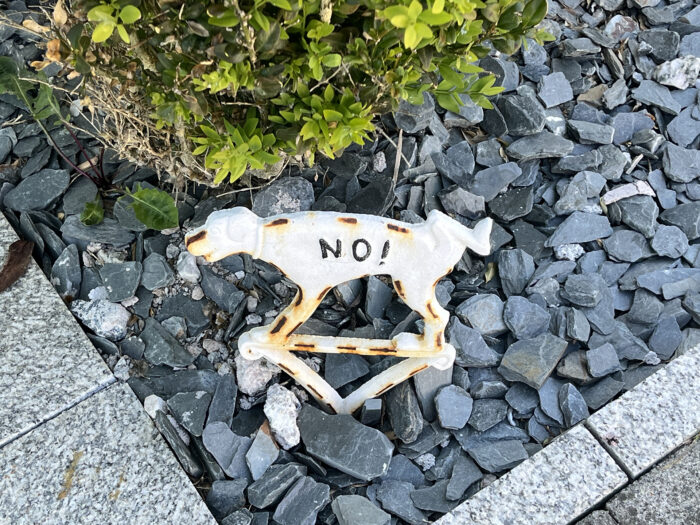
Rules are designed to keep everything neat and tidy
This means there’s a blanket ban on some things – including leylandii, ‘bubble’ skylights, ‘prefabricated accessory buildings’, permanent plastic sun blinds/awnings, TV aerials, and satellite dishes.
And homeowners must make sure other things aren’t visible from the street, including clothes dryers, meter boxes, extractors, bins, and rooftop solar collectors.
Other rules ban all types of antisocial behaviour from drunkenness to harassment on the grounds of age, gender, race, culture, ability or lifestyle.
House prices
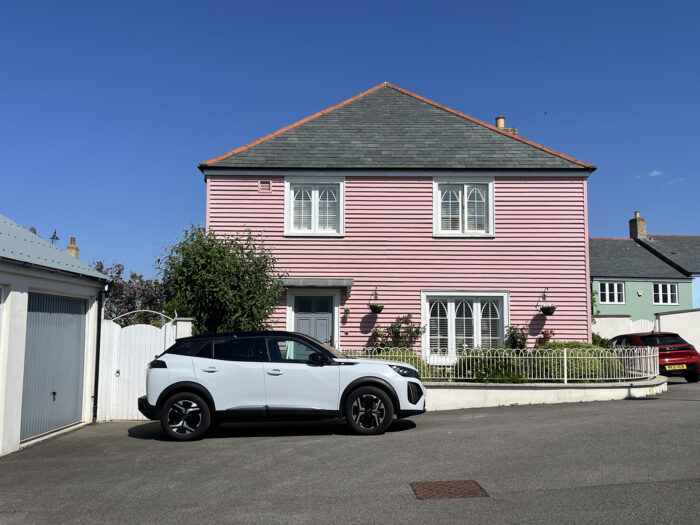
Nansledan is a desirable place to live
We all know tidiness is good for property prices, and house prices here are generally higher than in the rest of town.
Four-bed detached homes on the development are on the market for up to about £550,000; four-bed terraces up to about £495,000.
Meanwhile, a shared-ownership one-bed flat is currently on the market for £67,000.
Housing crisis
There is a particular housing crisis in Cornwall, which has low social housing stocks.
Many locals who work in the poorly paying, seasonal tourist industry find themselves priced out of a housing market where prices have been kept high, in part at least, by demand for second homes.
Local people
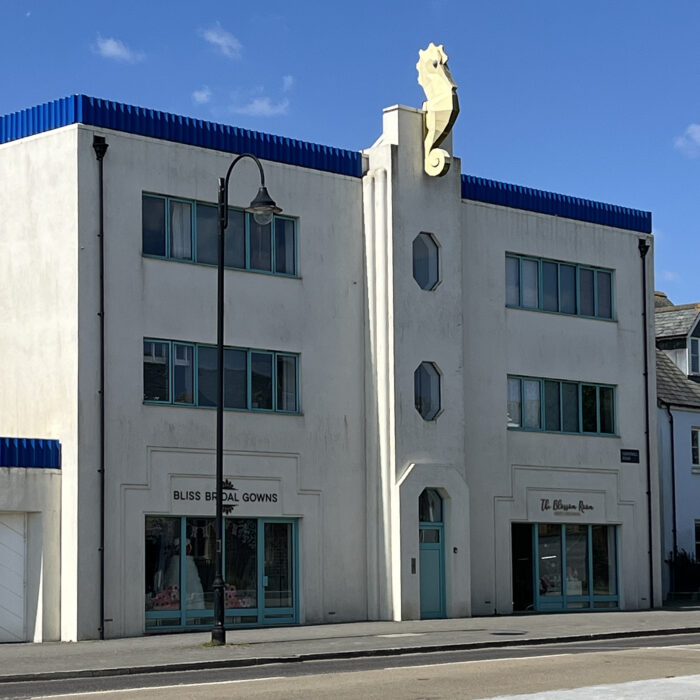
The suburb is home to a range of independent stores housed in unusual buildings like this

For the Duchy, ‘the primary purpose of the development is to meet local needs’.
So holiday lets are not allowed, and the Duchy is proud of how many home-buyers have Cornish postcodes.
Several of the homeowners I met, though, may have moved from elsewhere in Cornwall but originated from other parts of the UK, which raises questions about what actually constitutes ‘local’.
It also has to be said, Nansledan isn’t the most diverse of places and, for some, this will be a dealbreaker – but it’s also a reflection of the broader ethnic make-up of Cornwall, which is 96.8% white.
Community
All kinds of community events are organised throughout the year from the Christmas light switch-on to winter solstice celebration, annual arts festival to summer barbecues.
So what’s it like?
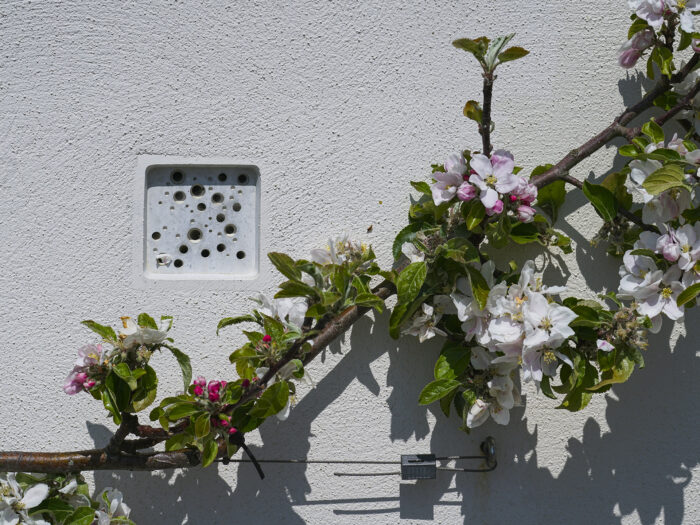
Bee bricks and communal fruit trees are lovely touches Image credit: Hugh Hastings
All this being said, what’s it like to live there?
I’m not a natural rule-follower, so I’m not sure it would suit me. But a great deal of thought has gone into designing a community and built environment that work well – and there’s lots to like.
Everyone I met in Nanseldan was full of praise for the place and loved living there.
It feels safe, easy on the eye, clean and tidy – all those rules pay off in terms of keeping things up to scratch.
Plus, the traditional styling is undeniably appealing – even if it’s not as textured, detailed and quaint as in an old settlement that has grown over time.
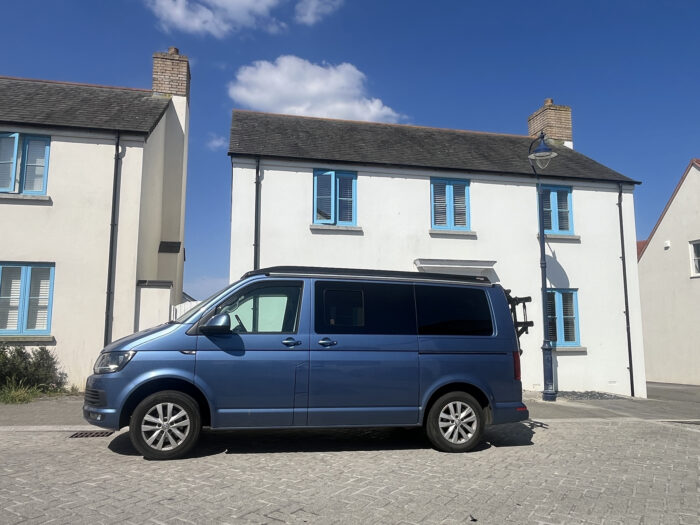
Residents need to consult the Design and Community Code before making any repairs or alterations to their homes
It’s a development that feels aspirational too – this is clearly somewhere people want to live.
Walkability is only going to improve as more everyday shops open to supplement the current scattering of boutiques and independent stores.
The focus on nature too is very appealing.
There is something slightly unreal and stage-set like about the estate. It does feel a little like a ‘historic’ theme village.
But not unpleasantly so, and, as time goes by, a patina of age will likely help dissipate the incongruity of the new ‘old’ buildings.
If you prefer modern architecture on principle, this is not the place for you – but there are plenty of people who will love the way it looks.
It seems as if traditional styles could be undergoing a wider resurgence in popularity because they can make us feel secure and comforted – something that can be important in challenging times, and that doesn’t have to be a negative thing.
Nansledan is much more appealing and better designed than most other new estates.
Passion and love have been put into the design of these homes – not something that can be said about many soulless new-build developments.
And a great deal of thought has gone into the masterplan, and intentional community-building.
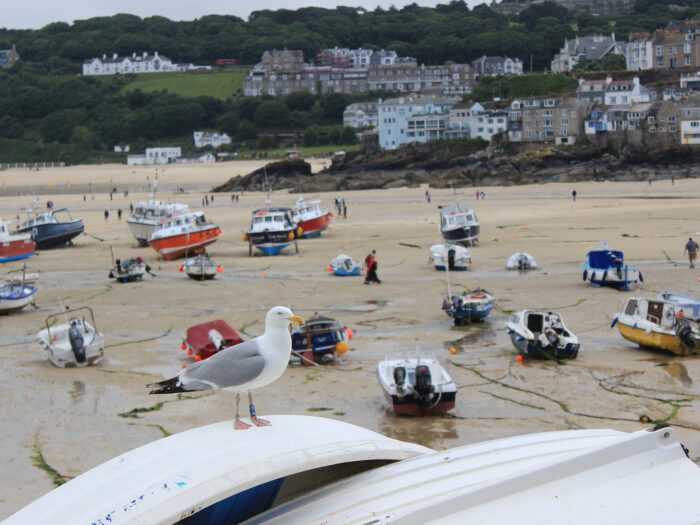
The housing crisis in Cornwall is severe
It’s not as quaint and picturesque as an authentically old village or town. But old houses in old places usually cost much more – and are frequently more remote and lacking the local amenities you’ll find at Nansledan.
On its own, Nansledan won’t solve the Cornish housing crisis – or even the housing problems of Newquay.
But it’s unfair to expect it do to so – it’s just one housing estate – and it’s only because of the royal connections that we make unrealistic demands of the place.
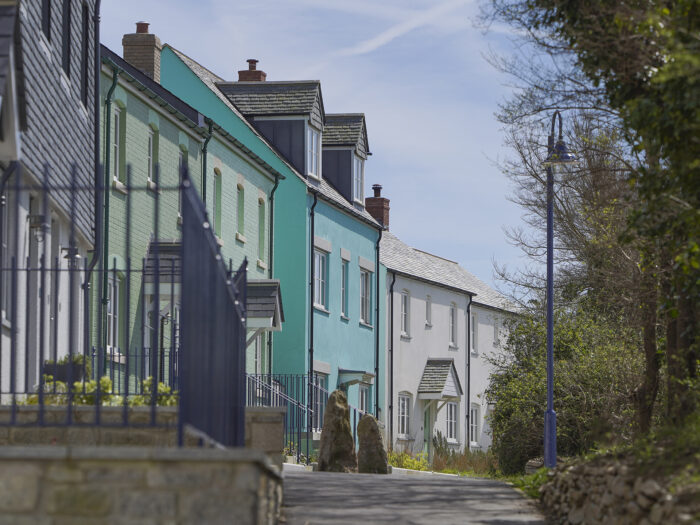
There is a stage-set quality to some of the streets Image credit: Hugh Hastings
It may not be a cure-all, but it will provide 4,000 much needed homes and accompanying infrastructure – as well as lots of neat ideas that could be copied by other housebuilders if they wanted to improve their offerings.
In the end, it mainly feels as though this is just a great place to live.
Just so long as you can cope with following the rules.
Rule breaking
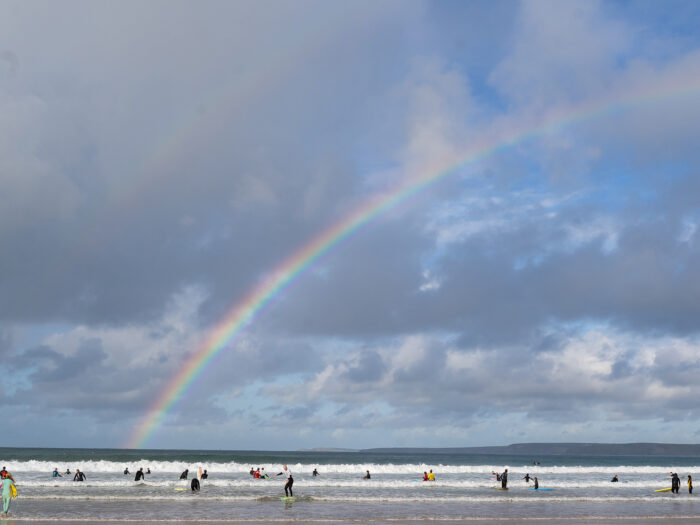
Nansledan has been nicknamed Surfbury
And I am not sure I could. I wouldn’t trust myself not to erect a uPVC conservatory in the dead of night or paint my house in several clashing non-approved colours.
Just because. (Problem with authority? Moi??)
I wonder what would happen if I did…
READ MORE:

